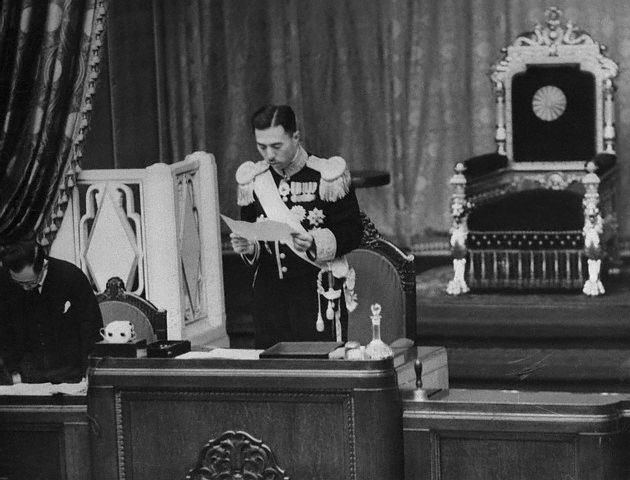Disbanded 22 May 1947 Last election 1946 | Established 6 March 1871 Succeeded by House of Councillors | |
 | ||
Seats 251 (1889)409 (at peak, 1938)373 (1947) | ||
The House of Peers (貴族院, Kizoku-in) was the upper house of the Imperial Diet as mandated under the Constitution of the Empire of Japan (in effect from 11 February 1889 to 3 May 1947).
Contents
Background
In 1869, under the new Meiji government, a Japanese peerage was created by an Imperial decree merging the former Court nobility (kuge) and former feudal lords (daimyo) into a single new aristocratic class called the kazoku. A second imperial ordinance in 1884 grouped the kazoku into five ranks equivalent to the European aristocrats, prince (or duke), marquis, count, viscount, and baron. Although this grouping idea was taken from the European peerage, the Japanese titles were taken from Chinese and based on the ancient feudal system in China. Itō Hirobumi and the other Meiji leaders deliberately modeled the chamber on the British House of Lords, as a counterweight to the popularly elected House of Representatives (Shūgiin).
Establishment
In 1889, the House of Peers Ordinance established the House of Peers and its composition. For the first session of the Imperial Diet (1889–1890), there were 145 hereditary members and 106 imperial appointees and high taxpayers, for a total of 251 members. With the creation of new peers, additional seats for members of the former Korean nobility and four seats for representatives from The Japan Imperial Academy, membership peaked at 409 seats by 1938. In 1947 during its 92nd and final session, the number of members was 373.
Composition
After revisions to the ordinance, notably in 1925, the House of Peers comprised:
- The Crown Prince (Kōtaishi) and the Imperial Grandson and Heir Presumptive (Kōtaison) from the age of 18, with the term of office for life.
- All Imperial Princes (shinnō) and lesser Princes of the Imperial Blood (ō) over the age of 20, with the term of office for life.
- All Princes and Marquises over the age of 25 (raised to 30 in 1925), with the term of office for life.
- 18 Counts, 66 Viscounts and 66 Barons over the age of 25 (raised to 30 in 1925), for seven-year terms.
- 125 distinguished politicians and scientists over the age of 30 and nominated by the Emperor in consultation with the Privy Council, with the term of office for life
- 4 members of the Imperial Academy over the age of 30, elected by the academicians and nominated by the Emperor, for seven-year terms.
- 66 elected representatives of the 6000 highest taxpayers, over the age of 30 and for seven-year terms.
Postwar dissolution
After World War II, under the current Constitution of Japan, in effect from 3 May 1947, the unelected House of Peers was replaced by an elected House of Councillors.
